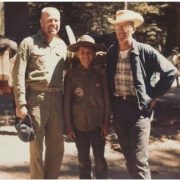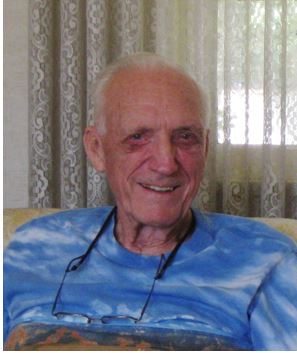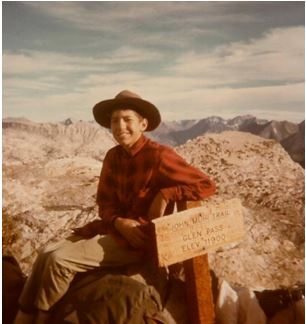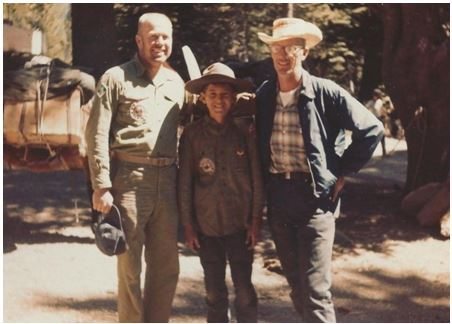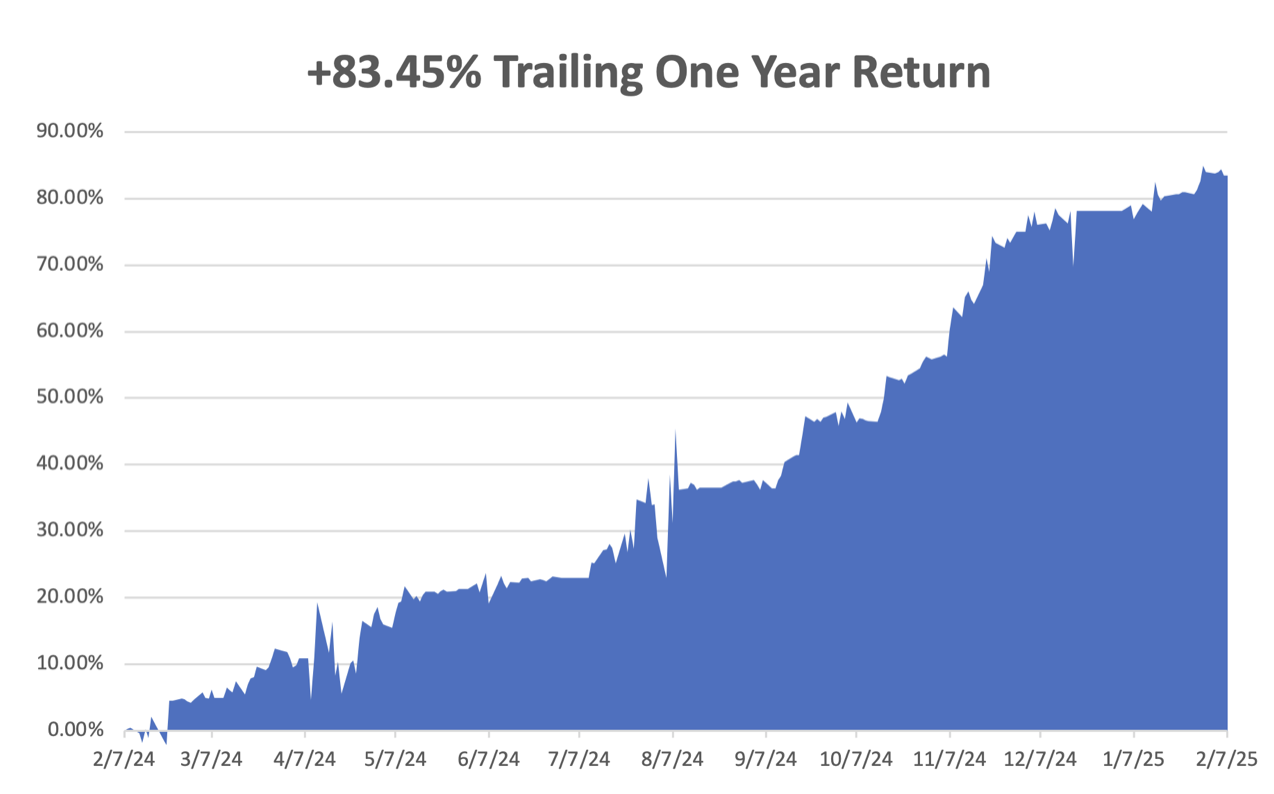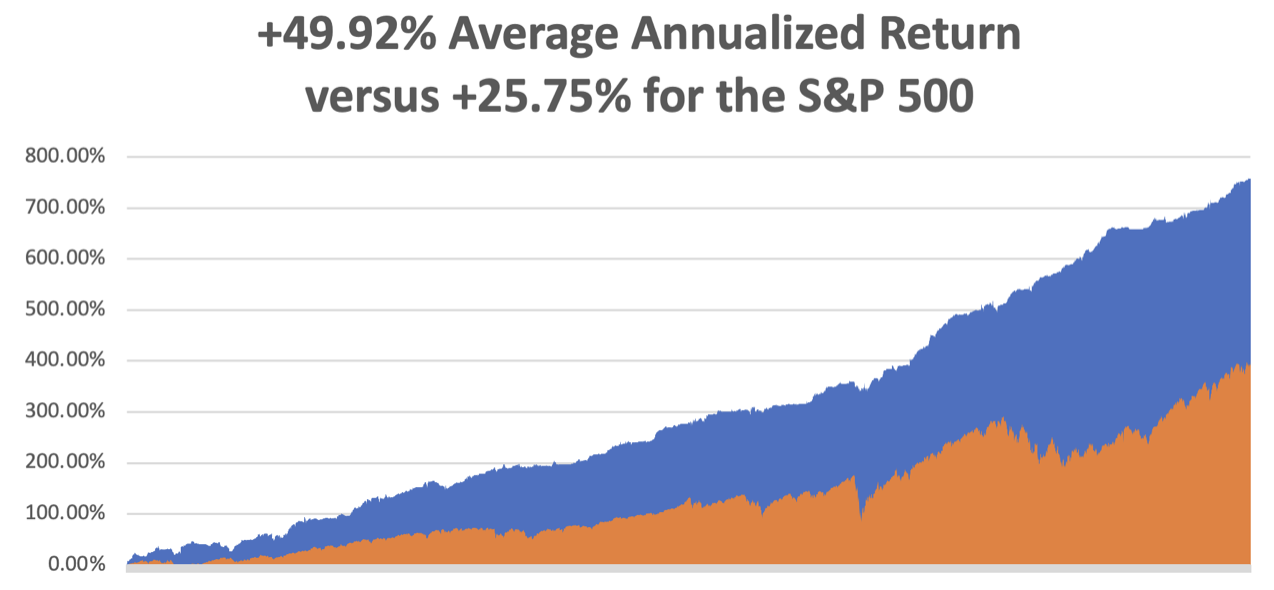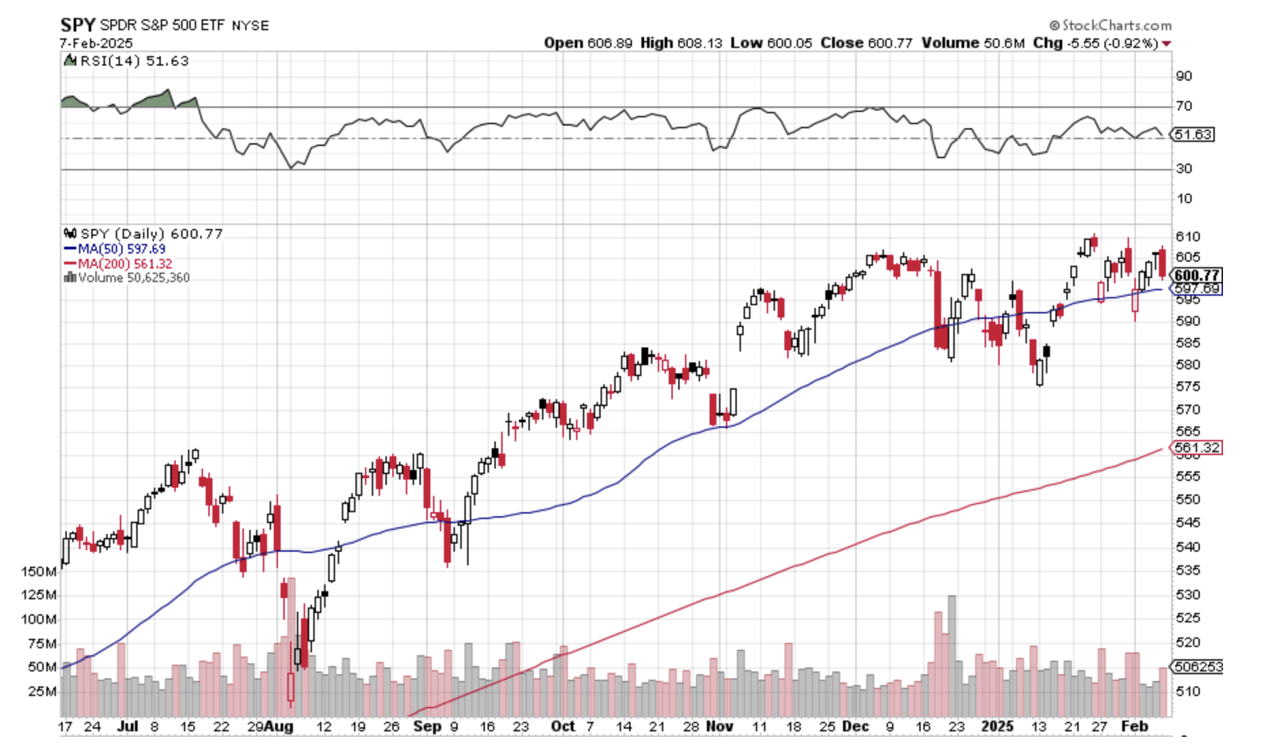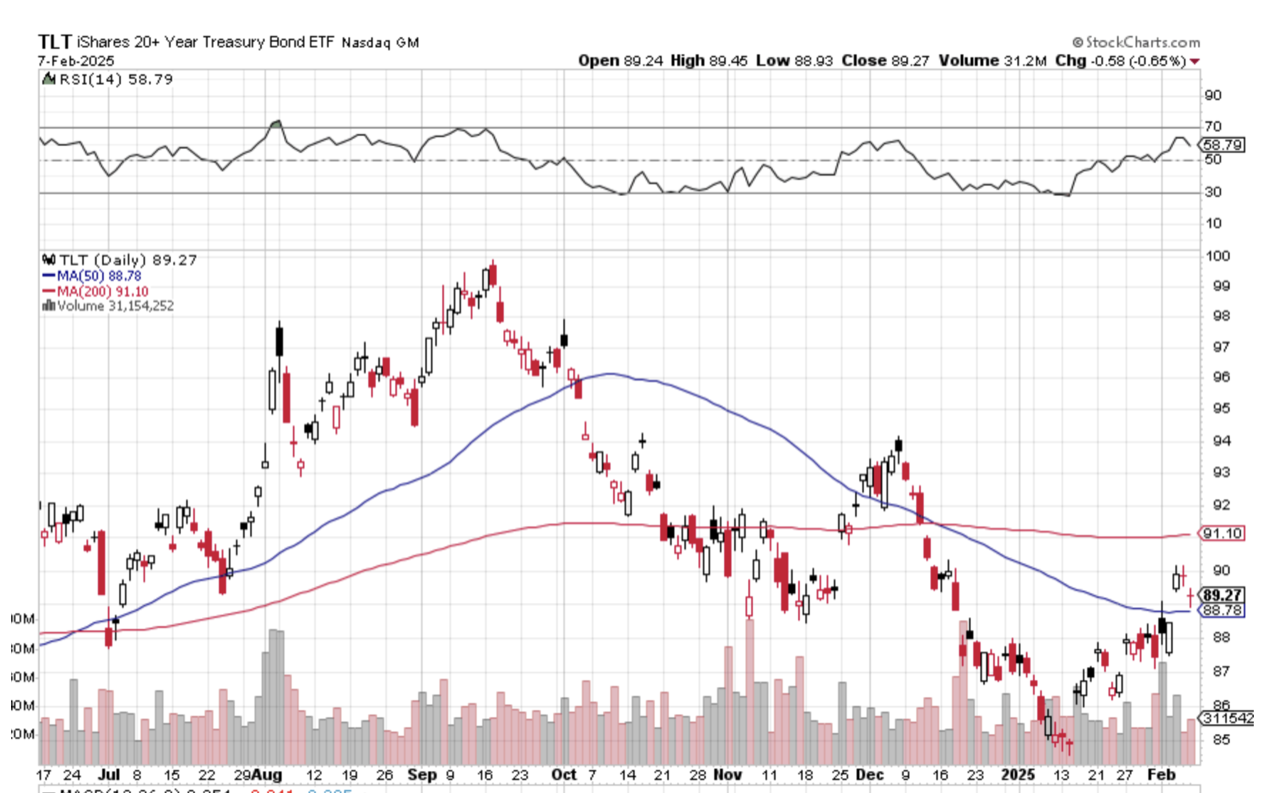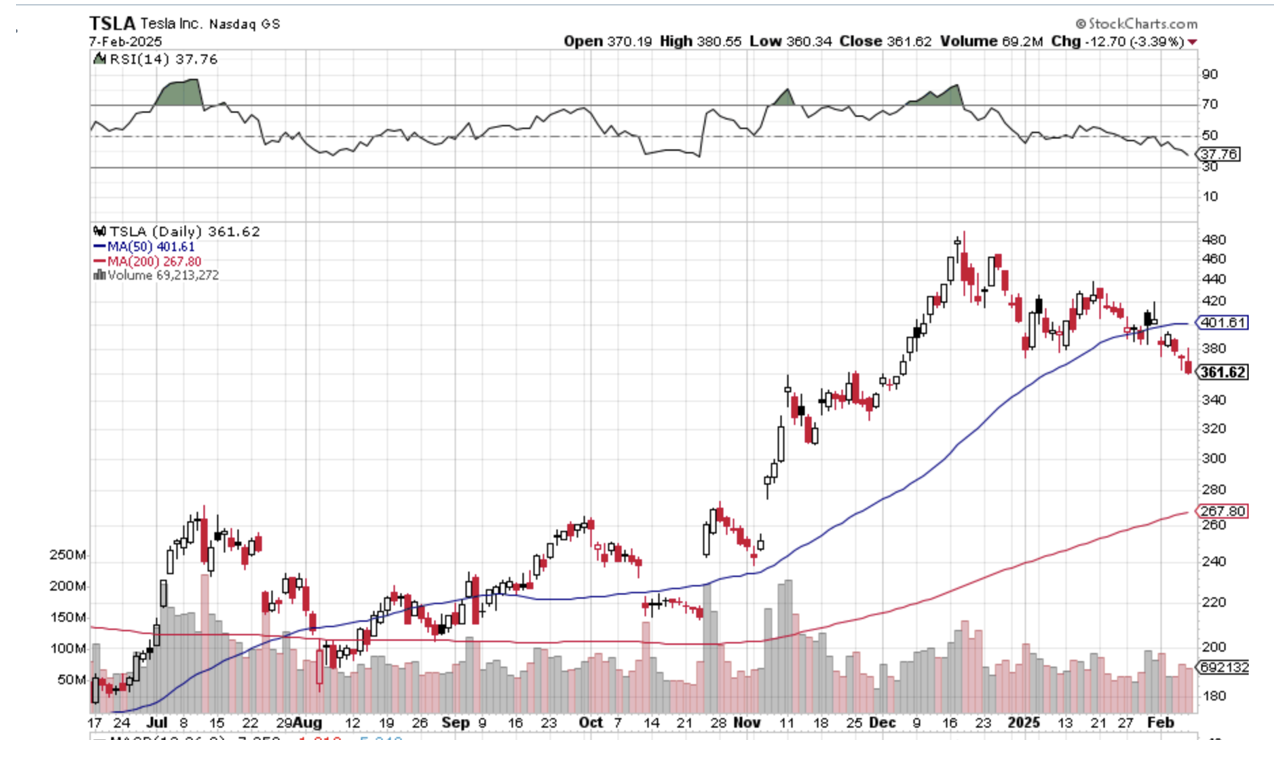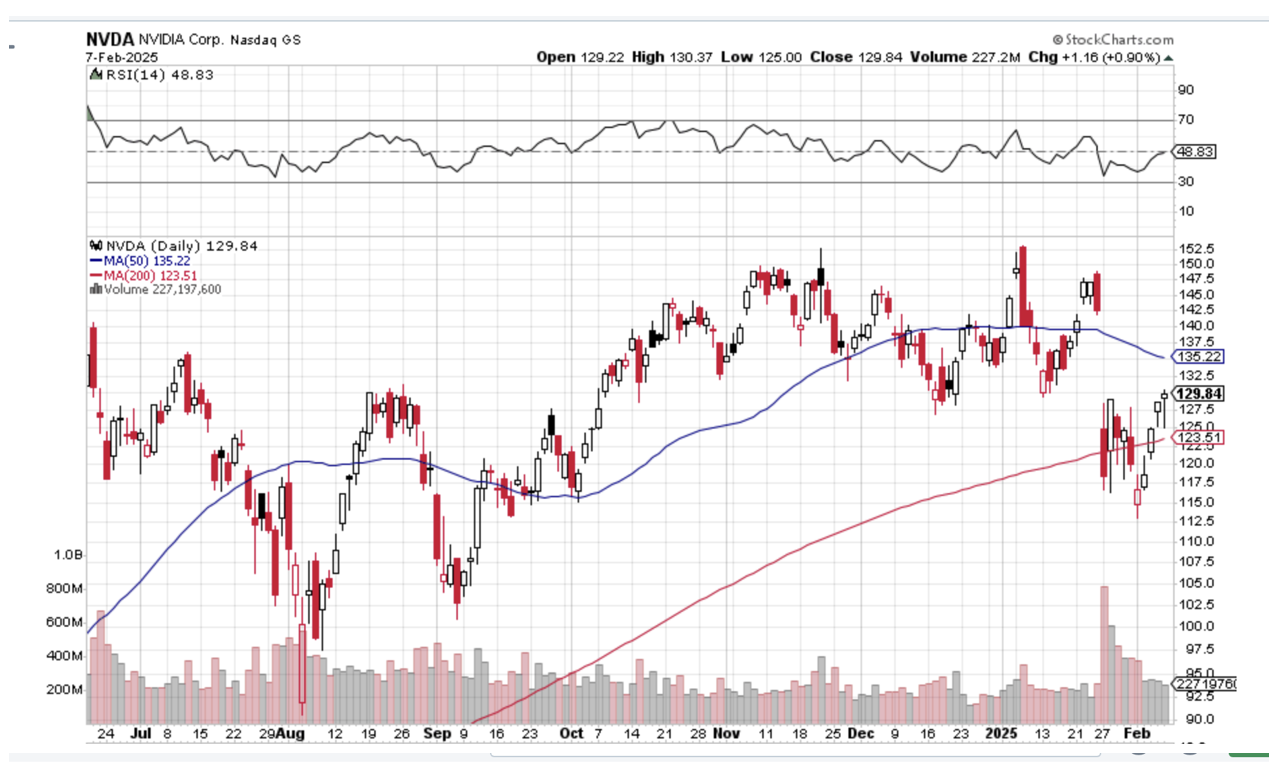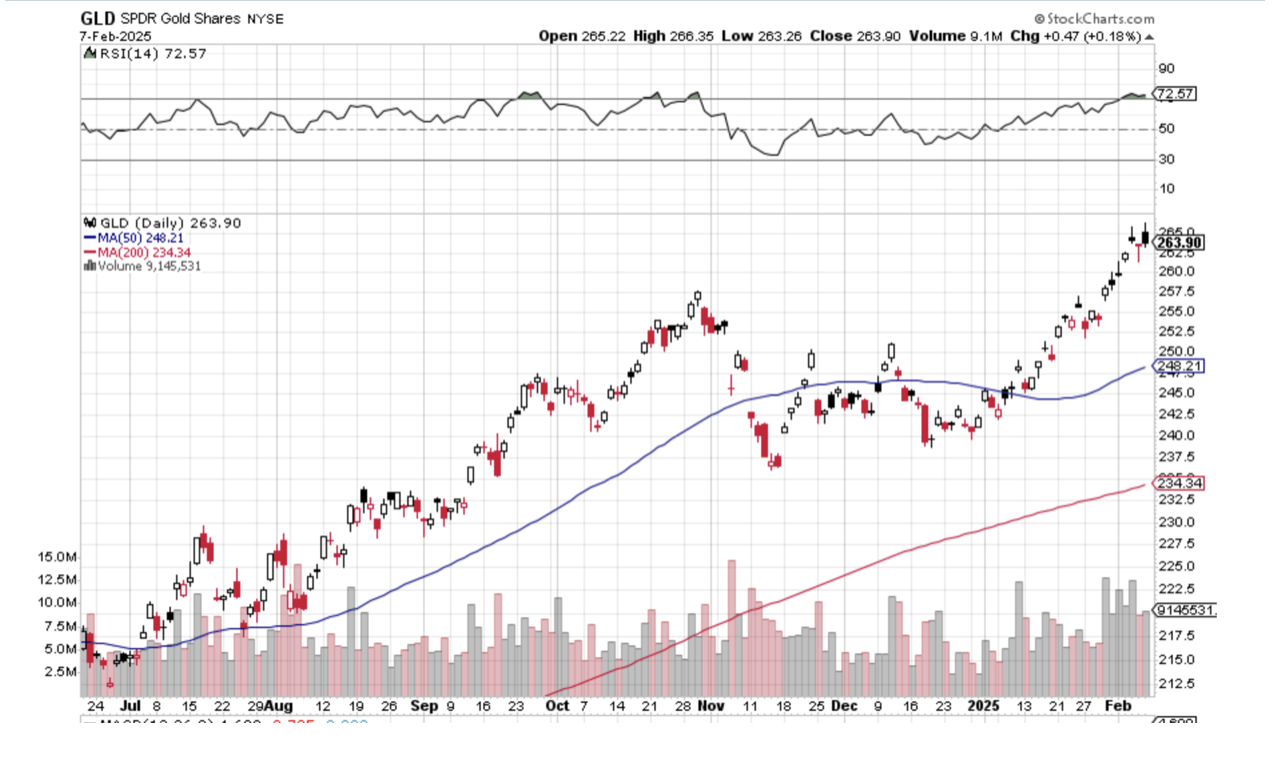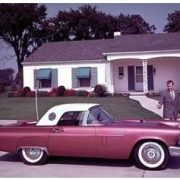I have a new outlook for the US stock markets.
The current government's economic policy reminds me a lot about the Marine Corps boot camp. Through harsh treatment and rigorous training, the Marines seek to destroy incoming recruits. They then spend 13 weeks rebuilding a new soldier from scratch who is obedient, respectful, follows orders, and is in much better physical condition. He is also a pretty good shot.
Since Trump inherited an almost perfect economy, with 3% real GDP growth, 2.8% inflation, and 4% unemployment, he has to break it first. Then he can spend the next four years rebuilding it and take credit for the recovery.
It looks like we are going to get more on the destruction front this week, with the US announcing European tariffs, which tanked stocks on Friday. We could remain in the destruction phase for the rest of the year. It sets up nicely at least a 20% correction sometime in 2025. Oh, and never buy on a Friday. All of the “shock and awe” announcements are occurring on the weekends. Wait for the Monday morning opening and buy the collapse.
It’s pretty clear that markets hate all things tariff-related. Can we please talk more about deregulation, which markets love? The reality is that markets don’t know how to price in Trump, swinging back and forth between euphoria one moment to Armageddon another. Best case, markets flat line. Worst case, they crash.
Here are some additional causes for concern. Big Tech was the only stock market sector that saw net inflows in 2024. It was also the only down sector in January. It just so happens to be the most overweight sector among almost all individuals and institutions, including yours. Big Tech now accounts for 35% of stock market capitalization. It is a concentration on steroids. So when we finally DO get a correction, it will be a big one, easily more than 10%.
Looking at stock market performance around the world since the 2008-09 financial crisis, it’s easy to see where the idea of American exceptionalism comes from. Since 2010, the German stock market (EWG) is up by 142% and the UK (EWU) by 112%. During the same 15-year period, the S&P 500 (SPY) soared by 1,112%, an outperformance of an eye-popping 8:1.
Since the beginning of 2025, the German stock market (EWG) is up by 12.7% and the UK (EWU) by 9%. In the meantime, the S&P 500 has managed a mere 3.5% gain. What has happened? Has something changed? Is American exceptionalism a thing of the past? If so, it would be terrible news for stocks.
In the rest of the world, 26% of corporate cash flow is reinvested in the company. In the US, it’s 42%, and for the Magnificent Seven, it’s 57%. This is American Exceptionalism distilled by a single driver. If this continues, that’s great. If rampant uncertainty drives US companies into hiding, it won’t. 90-day US Treasury bills yielding a risk-free 4.2% look pretty good in this new chaotic world, especially if you are still sitting on the gigantic profits of the past two years.
This is why Foreigners have been pouring money into the US as fast as possible and has been a major factor in our price appreciation until now. Foreign investors now own $23 trillion worth of American debt, equities, and real estate today versus only $8 trillion in 2017.
As I mentioned last week, when I suggest a European investment idea to a European, they tell me I am out of my mind and beg for more US investment ideas. I know this because about one-third of the Mad Hedge subscribers are aboard in 134 countries.
And this is why markets are so jittery. Some 23% of all the completed cars sold in the US are actually made in Mexico and Canada. For auto parts, the figure is more than 50%. The US sold 3.7 million vehicles made in Mexico and Canada. The new 25% tariff will increase prices by $6,300 per vehicle. Average car prices are now at $50,000 and are already at all-time highs. That works out to a $22.7 billion tax on the buyers of new cars who are mostly middle class.
My bet? That the prices of used cars soar, which aren’t subject to any such taxes.
Turn off the TV. Ignore the noise. Buy the down days and sell the up days. It’s no more complicated than that. If you want to play headline ping pong with the president, be my guest. But you’ll lose your shirt.
February has started with a breakeven +0.57% return so far.
That takes us to a year-to-date profit of +6.25% so far in 2025. My trailing one-year return stands at +83.45% as a bad trade a year ago fell off the one-year record. That takes my average annualized return to +5.23% and my performance since inception to +757.12%.
I used the weakness in Tesla to double up my long there. That tops up our portfolio to a long in (TSLA), a short in (TSLA), and longs in (NVDA) and (VST).
Some 63 of my 70 round trips, or 90%, were profitable in 2023. Some 74 of 94 trades have been profitable in 2024, and several of those losses were really break-even. That is a success rate of +78.72%.
Try beating that anywhere.
My Ten-Year View – A Reassessment
We have to substantially downsize our expectations of equity returns in view of the election outcome. My new American Golden Age, or the next Roaring Twenties, is now looking at multiple gale force headwinds. The economy will completely stop decarbonizing. Technology innovation will slow. Trade wars will exact a high price. Inflation will return. The Dow Average will rise by 600% to 240,000 or more in the coming decade. The new America will be far more efficient and profitable than the old.
My Dow 240,000 target has been pushed back to 2035.
On Monday, February 10, nothing of note takes place.
On Tuesday, February 11, at 8:30 AM EST, the NFIB Business Optimism Index is released.
On Wednesday, February 12 at 8:30 AM, the Core Inflation Rate is printed.
On Thursday, February 13 at 8:30 AM, the Weekly Jobless Claims are disclosed.
On Friday, February 14 at 8:30 AM, the Producer Price Index is announced. At 2:00 PM the Baker Hughes Rig Count is printed.
As for me, it was with a heavy heart that I boarded a plane for Los Angeles to attend a funeral for Bob, the former scoutmaster of Boy Scout Troop 108.
The event brought a convocation of ex-scouts from up and down the West coast and said much about our age.
Bob, 85, called me two weeks ago to tell me his CAT scan had just revealed advanced metastatic lung cancer. I said, “Congratulations Bob, you just made your life span.”
It was our last conversation.
He spent only a week in bed and then was gone. As a samurai warrior might have said, it was a good death. Some thought it was the smoking he quit 20 years ago.
Others speculated that it was his close work with uranium during WWII. I chalked it up to a half-century of breathing the air in Los Angeles.
Bob originally hailed from Bloomfield, New Jersey. After WWII, every East Coast college was jammed with returning vets on the GI bill. So he enrolled in a small, well-regarded engineering school in New Mexico in a remote place called Alamogordo.
His first job after graduation was testing V2 rockets newly captured from the Germans at the White Sands Missile Test Range. He graduated to design ignition systems for atomic bombs. A boom in defense spending during the fifties swept him up to the Greater Los Angeles area.
Scouts I last saw at age 13 or 14 were now 60, while the surviving dads were well into their 80s. Everyone was in great shape, those endless miles lugging heavy packs over High Sierra passes obviously yielding lifetime benefits.
Hybrid cars lined both sides of the street. A tag-along guest called out for a cigarette, and a hush came over a crowd numbering over 100.
Apparently, some things stuck. It was a real cycle of life weekend. While the elders spoke about blood pressure and golf handicaps, the next generation of scouts played in the backyard or picked lemons off a ripening tree.
Bob was the guy who taught me how to ski, cast rainbow trout in mountain lakes, transmit Morse code, and survive in the wilderness. He used to scrawl schematic diagrams for simple radios and binary computers on a piece of paper, usually built around a single tube or transistor.
I would run off to Radio Shack to buy WWII surplus parts for pennies on the pound and spend long nights attempting to decode impossibly fast Navy ship-to-ship transmissions. He was also the man who pinned an Eagle Scout badge on my uniform in front of beaming parents when I turned 15.
While in the neighborhood, I thought I would drive by the house in which I grew up, once a modest 1,800 square foot ranch-style home to a happy family of nine. I was horrified to find that it had been torn down, and the majestic maple tree that I planted 40 years ago had been removed.
In its place was a giant, 6,000-square-foot marble and granite monstrosity under construction for a wealthy family from China.
Profits from the enormous China-America trade have been pouring into my hometown from the Middle Kingdom for the last decade, and mine was one of the last houses to go.
When I was class president of the high school here, there were 3,000 white kids and one Chinese. Today, those numbers are reversed. Such is the price of globalization.
I guess you really can’t go home again.
At the request of the family, I assisted in the liquidation of his investment portfolio. Bob had been an avid reader of the Diary of a Mad Hedge Fund Trader since its inception, and he had attended my Los Angeles lunches.
It seems he listened well. There was Apple (AAPL) in all its glory at a cost of $21. I laughed to myself. The master had become the student, and the student had become the master.
Like I said, it was a real circle of life weekend.
Scoutmaster Bob
1965 Scout John Thomas
The Mad Hedge Fund Trader at Age 11 in 1963
Stay Healthy,
John Thomas
CEO & Publisher
The Diary of a Mad Hedge Fund Trader

